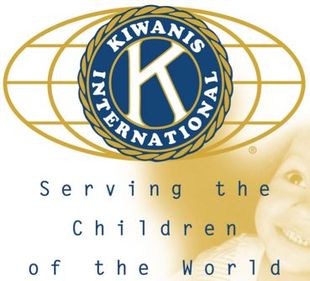
About Kiwanis - taken from the Kiwanis International Website.
Kiwanis clubs, located in 80 nations, help their communities in countless ways. Each community’s needs are different—so each Kiwanis club is different. By working together, members achieve what one person cannot accomplish alone. When you give a child the chance to learn, experience, dream, grow, succeed and thrive, great things happen.
Service footprint: Service is at the heart of every Kiwanis club, no matter where in the world it's located. Members stage nearly 150,000 service projects and raise nearly US$100 million every year for communities, families and projects.
A family of servant leaders: Kiwanis clubs focus on changing the world by serving children, one child and one community at a time. To do this, many clubs also sponsor a Kiwanis family club—K-Kids for primary school children; Builders Clubs for adolescents; Key Clubs for teens; CKI clubs for university students and Aktion Clubs for adults living with disabilities—to reach more people and have a greater service impact on their communities.
Traditional and not: No two Kiwanis clubs look exactly the same. Each member’s and community’s needs are different, and each club should look different. Some clubs are very traditional, with weekly meetings and a strong sense of history. Other clubs don’t meet at all, and instead hold meetings online and only come together for service projects. Newer clubs may follow the 3-2-1 concept: 3 hours of service, 2 hours of social activity and a 1-hour meeting each month. Clubs should reflect their communities and their members and should work to meet their needs. Flexibility is key to a successful club.
Fellowship and fun: Kiwanis members don’t just do service—they have fun. Members make new friends by being part of a club where they attend meetings and participate in social events. Kiwanis clubs also provide excellent networking opportunities for professionals. Members meet new people from all over their region and the world through service projects, fundraising and by attending district and international conventions.
Kiwanis clubs, located in 80 nations, help their communities in countless ways. Each community’s needs are different—so each Kiwanis club is different. By working together, members achieve what one person cannot accomplish alone. When you give a child the chance to learn, experience, dream, grow, succeed and thrive, great things happen.
Service footprint: Service is at the heart of every Kiwanis club, no matter where in the world it's located. Members stage nearly 150,000 service projects and raise nearly US$100 million every year for communities, families and projects.
A family of servant leaders: Kiwanis clubs focus on changing the world by serving children, one child and one community at a time. To do this, many clubs also sponsor a Kiwanis family club—K-Kids for primary school children; Builders Clubs for adolescents; Key Clubs for teens; CKI clubs for university students and Aktion Clubs for adults living with disabilities—to reach more people and have a greater service impact on their communities.
Traditional and not: No two Kiwanis clubs look exactly the same. Each member’s and community’s needs are different, and each club should look different. Some clubs are very traditional, with weekly meetings and a strong sense of history. Other clubs don’t meet at all, and instead hold meetings online and only come together for service projects. Newer clubs may follow the 3-2-1 concept: 3 hours of service, 2 hours of social activity and a 1-hour meeting each month. Clubs should reflect their communities and their members and should work to meet their needs. Flexibility is key to a successful club.
Fellowship and fun: Kiwanis members don’t just do service—they have fun. Members make new friends by being part of a club where they attend meetings and participate in social events. Kiwanis clubs also provide excellent networking opportunities for professionals. Members meet new people from all over their region and the world through service projects, fundraising and by attending district and international conventions.
For more information, and to go to Kiwanis International's main website, click the Button below.
